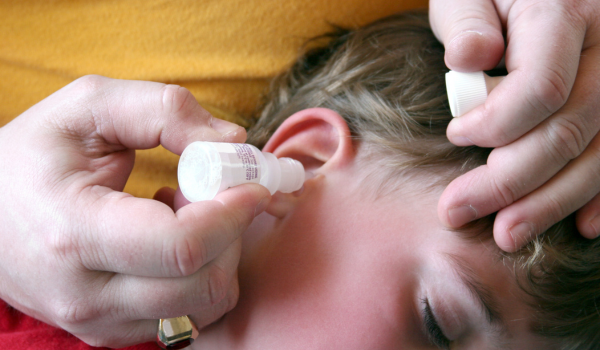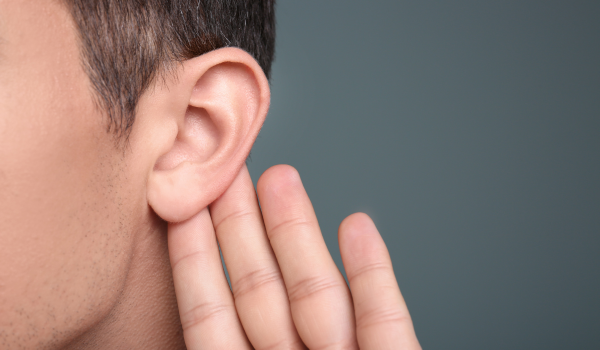.png)
Hearing loss can affect anyone, but certain groups of people are far more vulnerable than others. Understanding who is at higher risk for deafness helps promote early diagnosis, better prevention, and more targeted care.
This guide highlights the most common high-risk populations for hearing loss and why they need extra attention when it comes to ear health.
Older Adults
One of the most affected groups is the elderly. Age-related hearing loss, also known as presbycusis, becomes increasingly common after age 60.
Key reasons:
-
Degeneration of inner ear structures
-
Loss of auditory nerve function
-
Cumulative exposure to sound over decades
Warning signs in older adults:
-
Frequently asking others to repeat themselves
-
Increasing TV or radio volume
-
Difficulty following group conversations
Why it matters:
Presbycusis is usually permanent but manageable with hearing aids, regular hearing tests, and proper ear care.
Noise-Exposed Workers
People who work in loud environments face significant risk of noise-induced hearing loss (NIHL), one of the most preventable types.
High-risk jobs include:
-
Construction
-
Factory or industrial settings
-
Military
-
Live music and sound engineering
-
Airports
Risk factors:
-
Daily exposure to sounds above 85 decibels
-
Lack of ear protection
-
Long-term, repetitive exposure
Protection tips:
-
Wear earplugs or earmuffs
-
Enforce noise regulations
-
Get routine workplace hearing tests
Infants Exposed to Prenatal Infections
Some babies are born deaf or with hearing loss due to infections during pregnancy, especially during the first trimester.
Common prenatal infections linked to deafness:
-
Rubella
-
Cytomegalovirus (CMV)
-
Toxoplasmosis
-
Syphilis
-
Herpes
Risk factors:
-
Unvaccinated mothers
-
Poor prenatal screening
-
Lack of early newborn hearing tests
Why early testing is critical:
Congenital hearing loss can affect language development, so prompt intervention and hearing aids are essential.
Premature Infants
Babies born before 37 weeks of gestation face additional challenges, including a higher likelihood of developing hearing problems.
Why they are at risk:
-
Immature auditory systems
-
Low birth weight
-
Exposure to ototoxic medications
-
Long-term NICU care with noisy equipment
How to reduce the risk:
-
Careful use of medications
-
Monitoring noise in neonatal units
-
Early hearing screening before hospital discharge
People with Genetic Hearing Conditions
Genetic factors are a leading cause of deafness, especially in children. Some conditions affect only hearing, while others impact multiple systems.
Examples of genetic conditions:
-
Usher syndrome
-
Waardenburg syndrome
-
Pendred syndrome
-
Non-syndromic genetic hearing loss
How genes affect hearing:
-
Passed down from one or both parents
-
Can appear at birth or develop gradually over time
-
May involve inner ear malformations or nerve damage
What helps:
-
Genetic counseling
-
Family history reviews
-
Early diagnosis and support programs
People with Chronic Illnesses
Certain long-term diseases can increase the risk of deafness by damaging the circulatory system, nerves, or causing inflammation in the auditory system.
High-risk health conditions:
-
Diabetes
-
Hypertension
-
Kidney disease
-
Autoimmune disorders (like lupus or rheumatoid arthritis)
-
Thyroid disorders
Why it matters:
These conditions reduce blood supply to the ear, harm sensory cells, or require ototoxic drugs.
Prevention tips:
-
Manage conditions through medication and lifestyle
-
Avoid drugs with known hearing side effects
-
Get regular audiology checkups
Cancer Patients Undergoing Ototoxic Treatment
People undergoing certain cancer treatments may suffer permanent hearing loss due to the use of ototoxic drugs.
Ototoxic agents include:
-
Chemotherapy drugs (cisplatin, carboplatin)
-
Radiation to the head or neck
-
Some high-dose antibiotics
What to watch for:
-
Tinnitus (ringing in ears)
-
Sudden or gradual hearing loss
-
Difficulty hearing high-frequency sounds
Best practices:
-
Have a baseline hearing test before treatment
-
Monitor hearing throughout therapy
-
Use less ototoxic alternatives when available
Children with Frequent Ear Infections
Middle ear infections (otitis media) are common in children, but repeated infections can cause long-term conductive hearing loss.
Risk factors for children:
-
Shorter Eustachian tubes
-
Being in daycare or crowded settings
-
Weaker immune systems
What to monitor:
-
Muffled hearing
-
Fluid behind the eardrum
-
Delays in speech or language development
Treatment options:
-
Ear tubes to drain fluid
-
Long-term antibiotic therapy
-
Regular checkups with a pediatric ENT
People with a Family History of Deafness
Even without a confirmed genetic condition, having relatives with hearing loss can increase your risk.
Why:
-
Shared genetic traits
-
Similar exposure to environmental triggers
-
Less awareness of early symptoms
Take early action by:
-
Scheduling routine hearing evaluations
-
Avoiding high-risk environments
-
Teaching hearing safety from a young age
Recreational Noise Exposure
People who often engage in loud hobbies or entertainment risk preventable hearing damage.
Examples:
-
Going to loud concerts or clubs
-
Using earbuds or headphones at high volumes
-
Hunting or shooting
-
Riding motorcycles without ear protection
Why it’s harmful:
Loud recreational noise can damage the tiny hair cells in the inner ear. Once destroyed, these cells do not grow back.
Protective strategies:
-
Use noise-canceling headphones
-
Wear ear protection during loud activities
-
Follow the 60/60 rule (60% volume for no more than 60 minutes at a time)
Underserved or Low-Income Populations
Access to hearing healthcare is not equal. People in low-income or underserved communities often miss early warning signs and go untreated for years.
Barriers include:
-
Lack of insurance
-
Few audiology services in rural areas
-
Limited awareness of deafness symptoms
How to help:
-
Support community health initiatives
-
Offer free or low-cost hearing tests
-
Expand access to hearing aids and follow-up care
Final Thoughts
While anyone can experience hearing loss, some individuals are significantly more vulnerable. Whether due to age, genetics, occupation, or limited access to care, identifying high-risk groups allows us to focus on early intervention and prevention strategies that truly work.
If you or someone you know fits one of these categories, don’t wait—get your hearing checked and take steps now to protect this essential sense.

.png)

.png)
.png)
.png)


